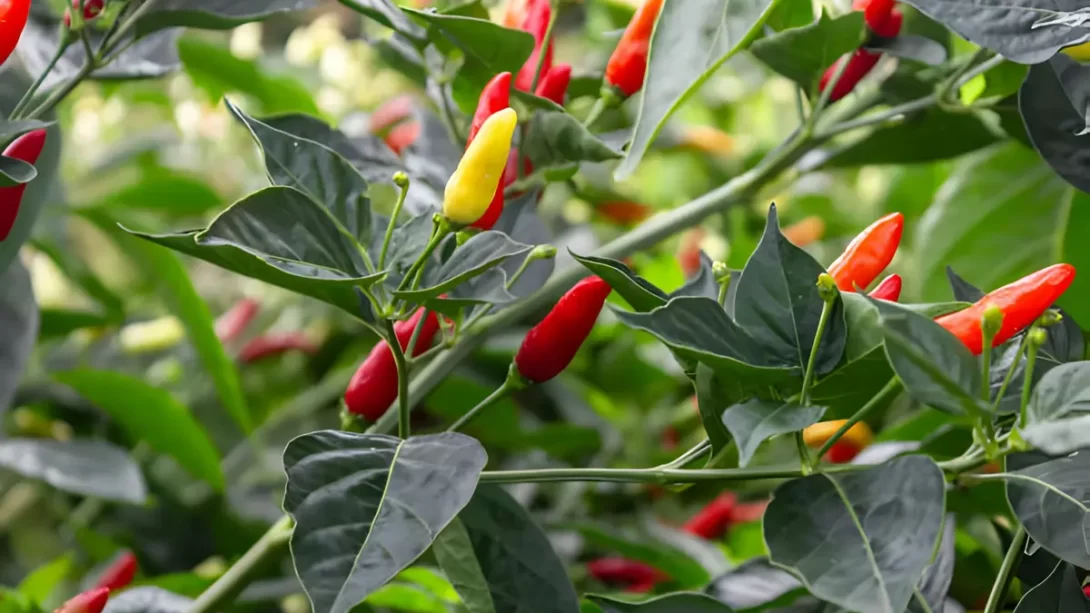Tabasco peppers, known for their vibrant red color and intense heat, are a staple in many culinary traditions around the world. Originating from the Tabasco region of Mexico, these small, fiery peppers have a Scoville heat unit ranging from 30,000 to 50,000, making them significantly hotter than jalapeños. In this article, we’ll dive into the various ways to grow, prepare, and utilize Tabasco peppers, showcasing their versatility beyond just spicing up dishes.
Growing Tabasco Peppers
Growing Tabasco peppers can be a rewarding experience for any gardening enthusiast. These peppers thrive in warm climates, preferring temperatures between 70°F and 85°F. They require well-draining soil with a pH between 6.0 and 6.8 for optimal growth.
When planting Tabasco peppers, start the seeds indoors approximately 8 weeks before the last expected frost. Transplant the seedlings outdoors when the danger of frost has passed and temperatures are consistently warm. Ensure they are planted in a sunny spot as they need a minimum of 6 hours of sunlight per day.
Regular watering is crucial for Tabasco peppers, especially during dry spells. However, be careful not to overwater, as this can lead to root rot. Mulching can help retain soil moisture and control weeds. As the plants grow, they might need support to keep them upright, especially as the peppers start to mature.
Harvesting and Preparing Tabasco Peppers
Tabasco peppers typically ripen 80 to 90 days after transplanting. You’ll know they’re ready to harvest when they turn a bright red color and have a slight give when squeezed gently. Use garden shears or scissors to cut the peppers from the plant, leaving a short piece of stem attached.
Handling Tabasco peppers requires caution due to their heat. It’s advisable to wear gloves and avoid touching your face or eyes. If you don’t have gloves, wash your hands thoroughly with soap and water after handling the peppers.
There are several ways to preserve Tabasco peppers. They can be dried by hanging them in a well-ventilated area away from direct sunlight, or in a dehydrator. Pickling is another popular method, which not only preserves them but also adds a tangy flavor. Freezing is the simplest method; just place the whole peppers in a freezer bag and store them in the freezer.
Culinary Uses of Tabasco Peppers
Tabasco peppers are renowned for their ability to infuse dishes with a vibrant heat and depth of flavor. Their culinary applications are vast and varied, allowing for experimentation and innovation in the kitchen. Here are some ways to incorporate these fiery peppers into your cooking:
- Sauces and Marinades: Crush or blend Tabasco peppers to create spicy sauces and marinades. They’re perfect for adding a kick to barbecue sauces, marinades for meats, or even as a spicy base for pizza.
- Salsas and Dips: Dice the peppers finely and add them to salsas, guacamole, or other dips. The heat of Tabasco peppers pairs well with the freshness of tomatoes, avocados, and citrus fruits.
- Spicy Condiments: Create your own spicy ketchup, mustard, or mayonnaise by incorporating minced Tabasco peppers. These condiments can elevate burgers, sandwiches, and grilled foods.
Remember, a little goes a long way with Tabasco peppers due to their intense heat. Start with a small amount and adjust according to your heat tolerance.
Making Homemade Tabasco Sauce
One of the most iconic uses of Tabasco peppers is in making the famous Tabasco sauce. This sauce is relatively simple to make at home and allows for customization according to personal taste. Here’s a basic guide:
- Ingredients: You’ll need ripe Tabasco peppers, distilled vinegar, and salt. Some recipes also include garlic or other spices for additional flavor.
- Preparation: Blend the peppers with a bit of the vinegar and salt to create a smooth paste. The amount of vinegar and salt can be adjusted to taste.
- Aging: For an authentic flavor, let the sauce ferment. Place the mixture in a jar and store it in a cool, dark place for up to two weeks. This process allows the flavors to meld and develop.
- Final Steps: After aging, boil the sauce for a few minutes, then strain it to remove the solids. Bottle the liquid sauce and store it in the refrigerator.
Making your own Tabasco sauce is not only a fun culinary project but also allows you to experiment with the heat and flavor profile.
Health Benefits and Nutritional Value
Beyond their culinary uses, Tabasco peppers offer significant health benefits. They are high in vitamins A and C, which are essential for immune function and skin health. Additionally, they contain capsaicin, the compound responsible for their heat, which has been linked to various health benefits.
- Metabolism Booster: Capsaicin has thermogenic properties, meaning it can increase metabolic rate and aid in weight loss.
- Pain Relief: Topically applied capsaicin is used in creams and patches for pain relief, as it can help reduce the intensity of pain signals sent to the brain.
- Antioxidant Properties: Tabasco peppers are rich in antioxidants, which help combat oxidative stress and may reduce the risk of chronic diseases.
It’s important to note that while Tabasco peppers offer health benefits, they should be consumed in moderation, especially by individuals with sensitive digestive systems or those who are not accustomed to spicy foods.
Non-Culinary Uses of Tabasco Peppers
Tabasco peppers are not limited to kitchen exploits; they have various non-culinary applications that can be both practical and interesting. Here are a few to consider:
- Natural Pest Repellent: The capsaicin in Tabasco peppers is an effective deterrent against many garden pests. Creating a homemade spray with pepper extract can help keep insects and animals away from your plants.
- Homemade Pain Relief Cream: Capsaicin, the compound that gives Tabasco peppers their heat, is used in commercial pain relief creams. A homemade version can be made for personal use to help alleviate muscle and joint pain.
- Cultural Significance: In some cultures, Tabasco peppers are used in rituals or as a symbol of strength and endurance. They hold a special place in culinary traditions and local folklore.
These unique applications highlight the versatility of Tabasco peppers beyond their spicy flavor, making them a valuable addition to both your garden and household.
Conclusion
Tabasco peppers, with their fiery heat and distinctive flavor, offer a world of possibilities for gardeners and cooks alike. From growing and harvesting to cooking and preserving, these small peppers pack a big punch in both the kitchen and beyond. Whether it’s spicing up your favorite dishes, crafting your own hot sauce, or exploring their health benefits and non-culinary uses, Tabasco peppers provide an exciting and flavorful adventure. Embrace the heat and let these vibrant peppers inspire your culinary creations and gardening endeavors.




